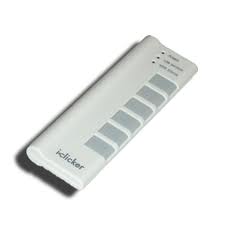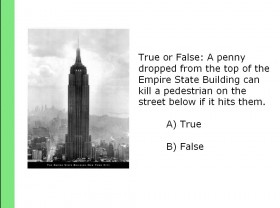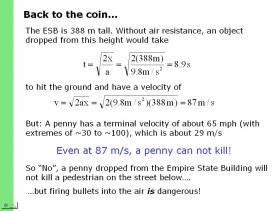The semester is three weeks old now and I haven’t mentioned what I’m doing here on the blog.
The course I’m teaching is an introductory physics course, and this semester I have about 135 students. In addition I am managing the ‘discussion groups’ (Australians: think ‘tutor groups’) for all students enrolled in the intro course, about 380 in total. There are nine discussion groups, and I’m teaching one of them as well.
So far I have found things to be quite busy, perhaps busier than ever before. Having such a large class naturally translates to many more students needing of my time.
I decided to go with two innovations this semester: online homework and clickers.
Online homework is a natural evolution of teaching, and it’s exactly as it sounds. The students visit a website where they are presented with the questions and must input the answers. An advantage of the system is the values are different for each student (so they can’t just enter their friends answers) and they get instant feedback. It is very customizable, eliminates the problem of how to grade 380 homeworks a week and I’m liking it a lot so far.
This is a clicker:
It is an wireless electronic voting device. In addition to the on/off button, there are 5 voting buttons (A through E) that the user can push to make a vote. A base station collects and tabulates the votes. I have the base station, and as part of the decision to use clickers I need to structure my lectures around them. This means putting questions to the class periodically (my goal is a minimum of four per lecture) so they can vote on them.
Sometimes they are just for information (“Have you registered the homework yet?”), sometimes they are conceptual questions (“Does a coin flipped coin fall faster going up or going down?”) and sometimes I put actual problems on the screen and give the students a few minutes to work them out and choose their answer.
Clickers give the students a way to anonymously test themselves during the lectures, which is important. It makes them think about the material more than they would in a passive class environment, especially since they know the next slide may be testing them. But I have found the best use of the clicker is to give a question and then wait a while before revealing the answer, or perhaps give a question for them to guess before revealing the information required to calculate the result.
For instance, yesterday I gave this question (click to enlarge):
Everyone (including myself) were astounded to see the voting results. Of the 108 votes registered, exactly 54 said True and 54 said False. 50% each way precisely! This is an ideal result in my opinion, because everyone wants to know the answer much more than had the voting gone (say), 90%/10%.
I made them wait a bit, for the next slide was an informational (ie. beyond the scope of the course) on air resistance, followed by this slide:
So the answer is False.
The last statement though. Previously in the class I had given a problem about firing bullets up into the air (99% of the examples I use in class I make up myself) and the velocity at which they return to Earth. Even considering the effects of air resistance bullets can be lethal upon their return. This may seem unlikely, but in researching the facts I discovered that a 1992 report revealed that the city of LA averaged 1.8 deaths per year between 1985 and 1992 due to bullets falling from the sky. The deaths were clustered around January 1 and July 4, times at which overexcited revelers may find it amusing to put their guns up and fire.
In addition to my classwork I am also striving to get other obligations complete. The other day I completed a paper to be printed in the proceedings of the 2010 SPIE conference (topic: “Modeling complex x-ray optical systems”) as well as a poster for a symposium this Friday at school. I’m also giving a seminar next Tuesday on the same topic, and soon plan to return my attentions to writing my PhD dissertation.
Wish me luck!



I would have liked physics and done a lot better if you had been my teacher. That would have required time travel however 😉